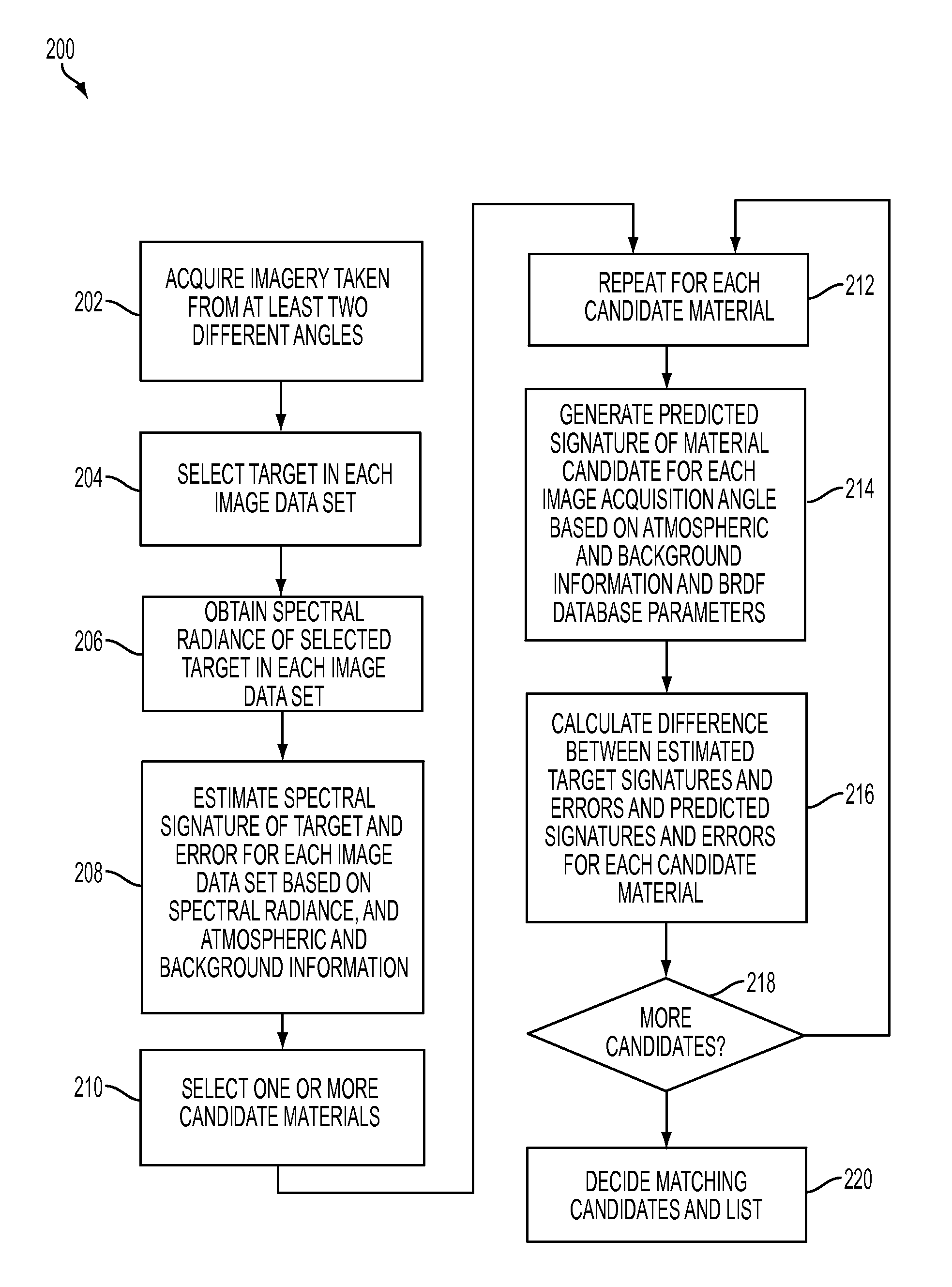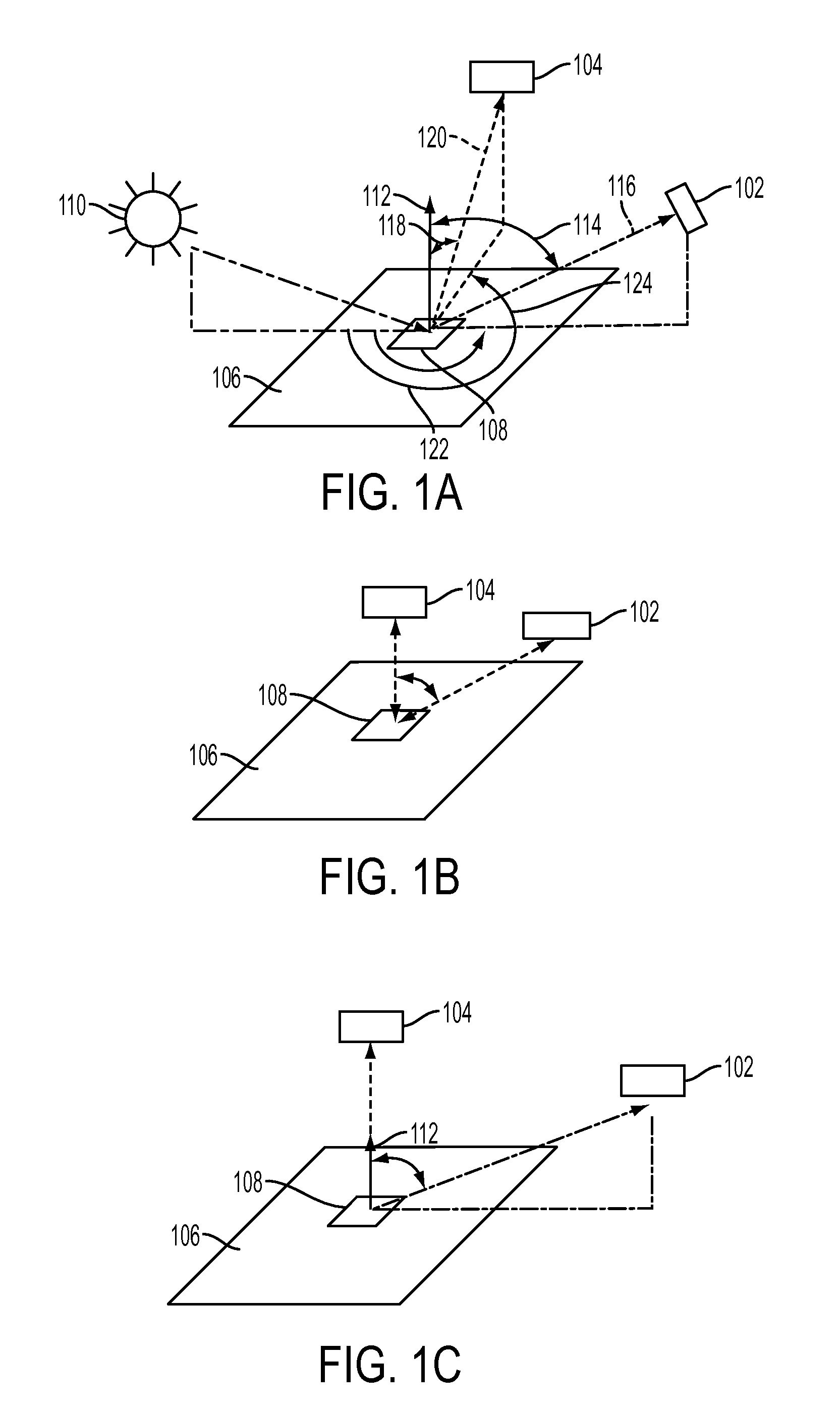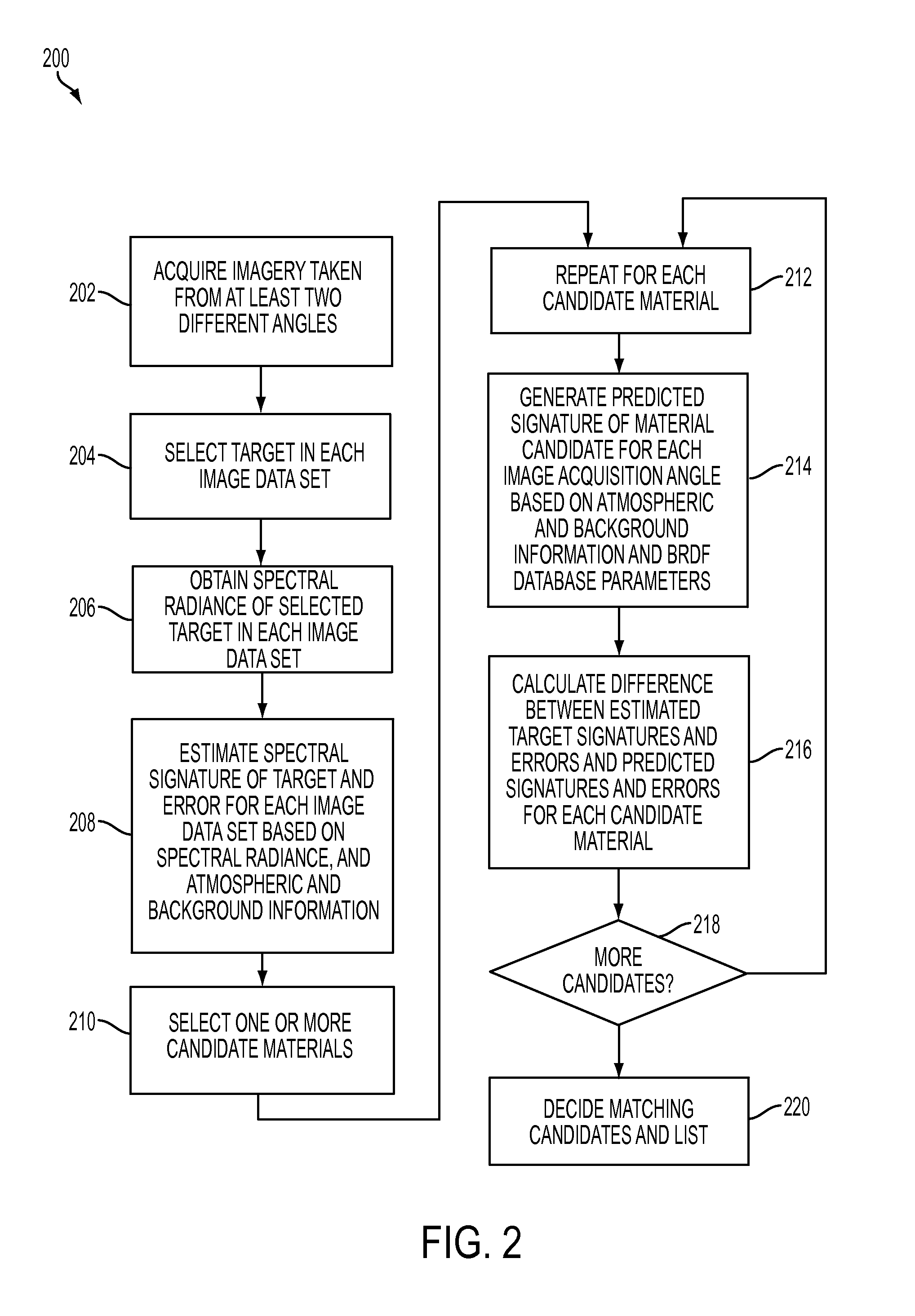Remote identification of non-lambertian materials
a technology of material identification and remote sensing, applied in the field of remote sensing and material identification, can solve the problems prone to yield erroneous results or no results, etc., and achieve the effect of reducing the probability of false matches and increasing the probability of correct identification of target materials
- Summary
- Abstract
- Description
- Claims
- Application Information
AI Technical Summary
Benefits of technology
Problems solved by technology
Method used
Image
Examples
Embodiment Construction
[0028]In the following description, like numbers refer to like elements.
[0029]Referring to FIGS. 1A, 1B and 1C, each figure schematically illustrates different examples of acquiring multi-angle imagery. Sensors 102 and 104 each acquire imagery of at least a portion of an area of earth 106—a scene—containing one or more targets of interest, for example, target 108. In the example of FIG. 1A, the sun 110 is illuminating the scene. However, other sources of illumination of the target are possible, including, for example, other man-made sources of illumination. FIG. 1B illustrates the case of the sensors 102 and 104 being active sensors, meaning that they illuminate the scene with radiation and measure reflectance of that radiation. Examples include synthetic aperture radar (SAR) systems and light detection and ranging (LIDAR) systems. An active sensor, such as used for mono-static SAR, is illustrated by FIG. 1B. However, the illumination source need not necessarily be co-located with t...
PUM
 Login to View More
Login to View More Abstract
Description
Claims
Application Information
 Login to View More
Login to View More - R&D
- Intellectual Property
- Life Sciences
- Materials
- Tech Scout
- Unparalleled Data Quality
- Higher Quality Content
- 60% Fewer Hallucinations
Browse by: Latest US Patents, China's latest patents, Technical Efficacy Thesaurus, Application Domain, Technology Topic, Popular Technical Reports.
© 2025 PatSnap. All rights reserved.Legal|Privacy policy|Modern Slavery Act Transparency Statement|Sitemap|About US| Contact US: help@patsnap.com



